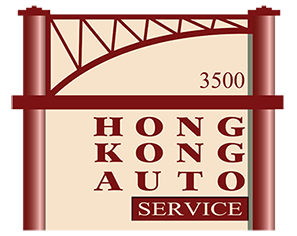Transmission Flush or Fluid Change? Which Does Your Car Need?
One thing most people love about their cars is that automatic transmissions seem to develop few, if any, problems. There isn’t much effort when it comes to keeping your automatic transmission running smoothly. Simply follow the manufacturer’s maintenance schedule, right?
However, what do you do if you have an older vehicle and the mileage goes way beyond the mileage in the maintenance schedule? Other people may have told you that you don’t need a transmission flush, that a fluid and filter change is good enough. Perhaps they even tell you that a flush is just $ for the mechanic.
Is this true? How do you know if your car needs a transmission flush? What is the difference between a transmission flush and a fluid change?
Let’s look at all these questions one by one.
Transmission Flush VS. Fluid Change
First, some very new models will say that the fluid in your transmission is designed to last the life of the car. Unfortunately, what they don’t say is what they expect the “life” of your car to be. Is it 60,000? 100,000 miles?
A filter and fluid change, often referred to as transmission service, involves removing the transmission pan. This allows about half of the transmission fluid to drain out. Once the pan is removed, the filter is accessible. The mechanic will remove the filter and either clean it or change it. Some models only use a mesh screen that is cleaned and is not designed to be replaced. At this time, the mechanic can inspect the fluid and the metal shavings in the pan. Finding metal shavings is normal, it’s the number of shavings that can help determine if the transmission has excessive wear. Transmission fluid can also tell your mechanic a few things. After the filter is changed or the screen cleaned, the pan is also cleaned. Then, it is put back in place. Fresh transmission fluid is added.
If you have ever looked at the transmission dipstick after a fluid change and wondered why the fluid still looks brownish or dirty, this is because only about half of the fluid was changed. The rest of the transmission fluid is inside a large donut-shaped type of device called the torque converter. The fluid in the torque converter can only be changed by a transmission flush.
This is Why a Transmission Flush is Important
While you don’t need to do a flush every time you service your transmission, this is an important maintenance item.
When the mechanic flushes the transmission, it removes every piece of grit, dirt, metal, grime, and all the transmission fluid.
Think of a transmission service as doing a load of laundry but leaving the tub half-filled with dirty water. Chances are that you are still going to get your next load of clothes clean. However, after a while the water you leave in the washer is going to be very, very black and contain all kinds of dirt and grit.
While you wouldn’t think of continuing to wash clothes in half dirty water, many drivers won’t think twice about never flushing their transmission. Obviously, your transmission isn’t a piece of clothing, but it still should be cleaned out with a flush regularly.
The Benefits of Flushing Your Transmission
In addition to truly cleaning out the entire transmission system, there are many benefits to a transmission flush you may not have considered before.
1. Improves Engine Efficiency
In the same way that clean motor oil makes your engine run more smoothly because it is properly lubricated with fresh oil, replacing every ounce of transmission fluid can allow both the motor and transmission to run more efficiently. When filters are clogged with dirt and metal, they may shift erratically. If the engine must work harder to make the transmission shift into gear, it costs you more in fuel and in engine wear.
2. Prevents Transmission Problems
Perhaps one of the biggest benefits of flushing your transmission is that something as simple as flushing the transmission can prevent problems with the transmission in the future. It might even solve minor issues your transmission is having right now. Filters that become clogged with dirt and debris prevent the transmission from shifting properly. Clogged filters can cause the transmission, and sometimes even the motor, to overheat due to overwork combined with a loss of lubrication. Regularly changing the filter and flushing the transmission can greatly reduce your chances of future problems with your transmission.
3. Save Money on Transmission Repairs
If no one has told you, transmissions repairs are quite expensive. The average transmission rebuild is $2,800! When you consider that fact, a transmission flush sounds like inexpensive insurance doesn’t it? Keeping the transmission clean, cool, and well lubricated is less expensive than a rebuild. Not to mention, the expense of loaner cars in the future.
4. Prevents Major Inconveniences Later On
In the benefits above, we have talked about how flushing your transmission regularly can prevent future transmission problems and engine overheating. Keep in mind that these problems may take a while and they won’t occur 100 miles after you failed to keep your scheduled appointment to have the transmission flushed. This can catch up with you – usually at the most inconvenient time.
5. Are There Some Vehicles That Should Never Have a Flush Performed?
Yes, there are. For example, if you purchased your vehicle used, you know nothing about the maintenance history, and the vehicle has more than 100,000 miles on it, a flush might do more harm than good. This is especially true if the transmission is already giving you problems.
These cases are difficult to judge since no one can see inside the transmission to know what is going on and whether a flush will break some items into pieces. Ask your trusted mechanic at Hong Kong Auto Service about your vehicle and whether you should have the transmission flushed.
In the End
To sum this all up in a nutshell, take your mechanic’s advice or flush the transmission on your beloved vehicle to keep it running as smoothly and efficiently. You can avoid expensive repairs and inconvenient breakdowns by performing this simple maintenance regularly.

